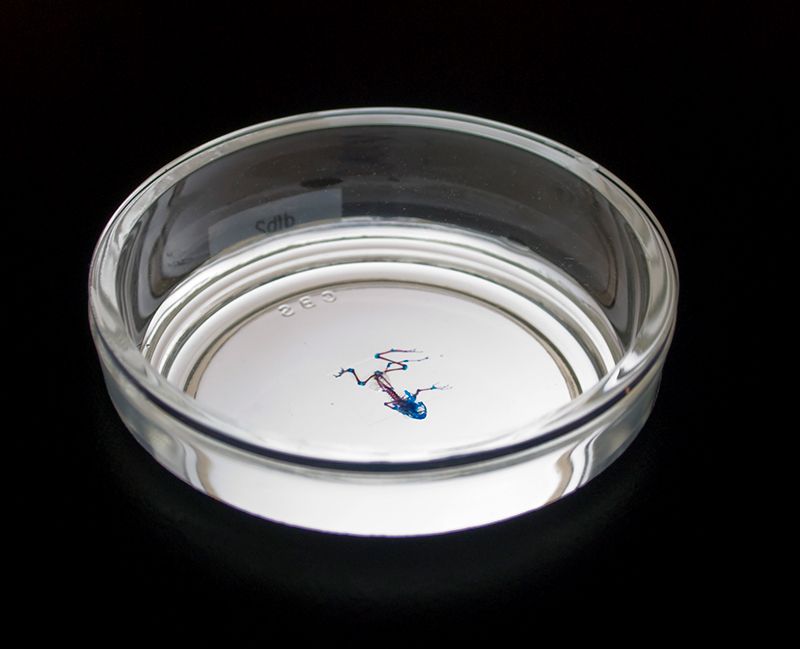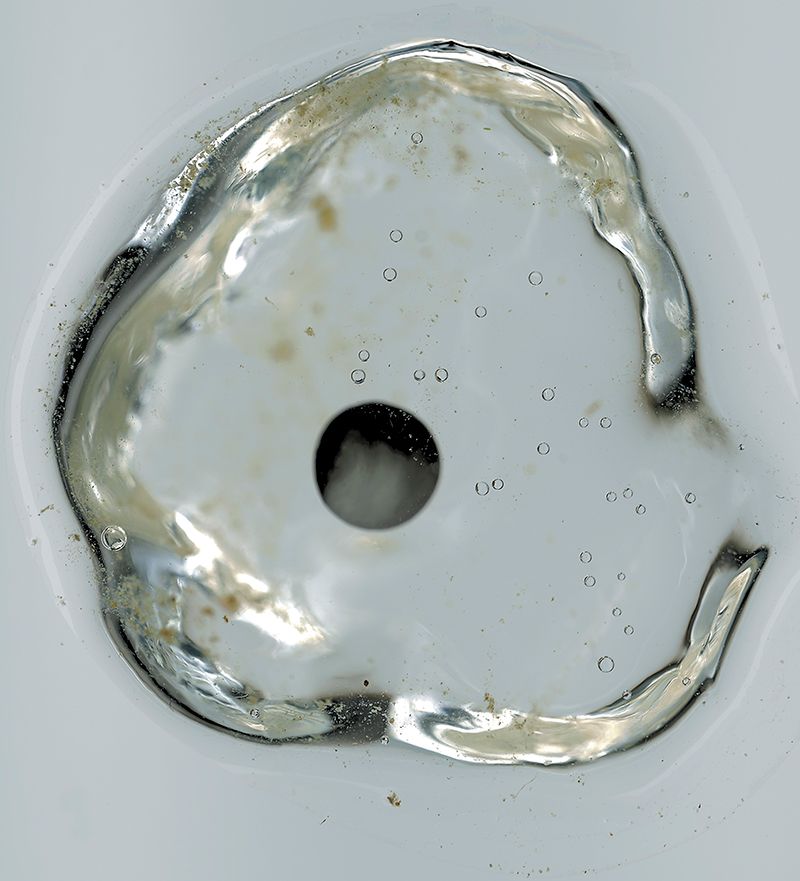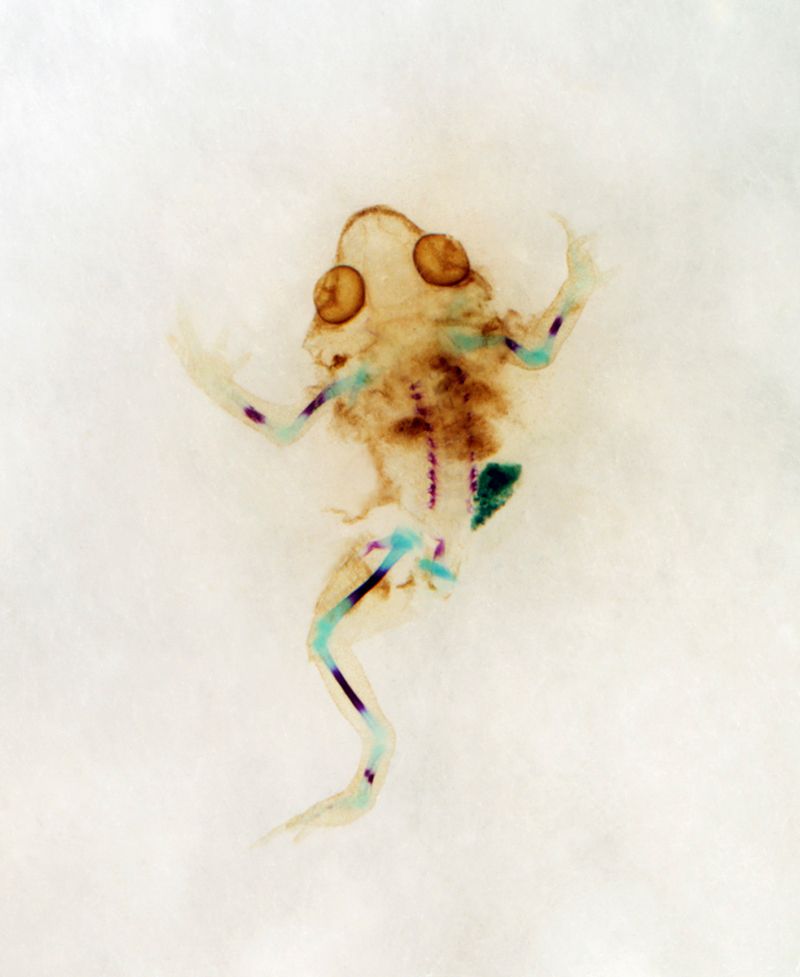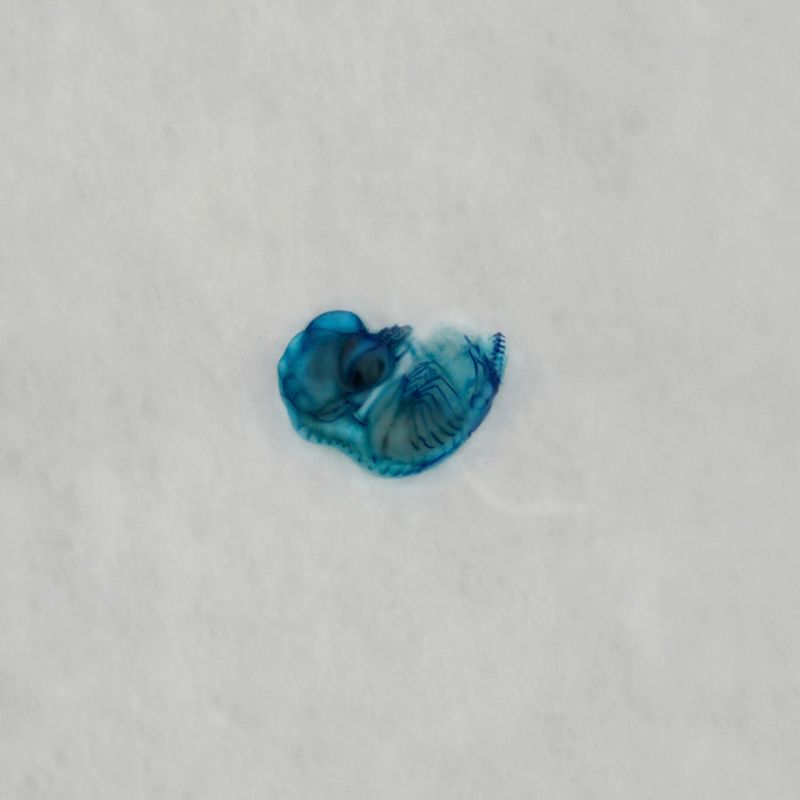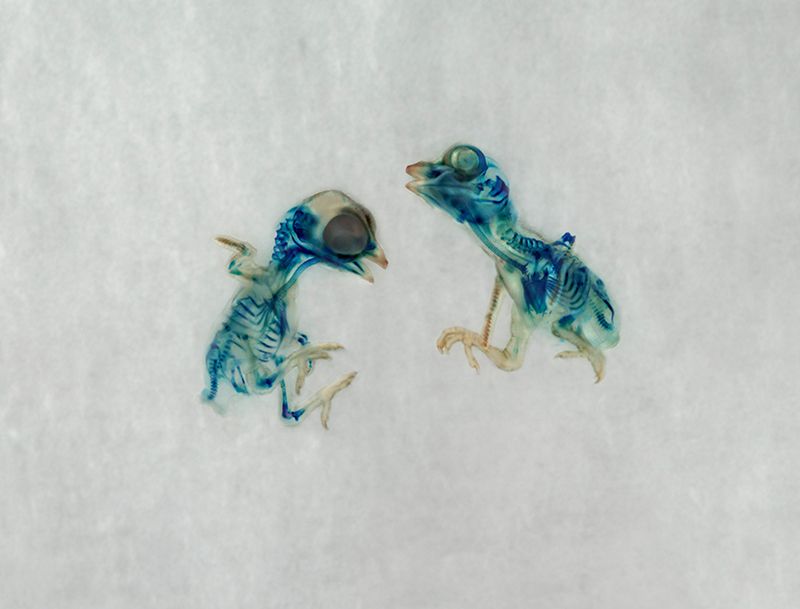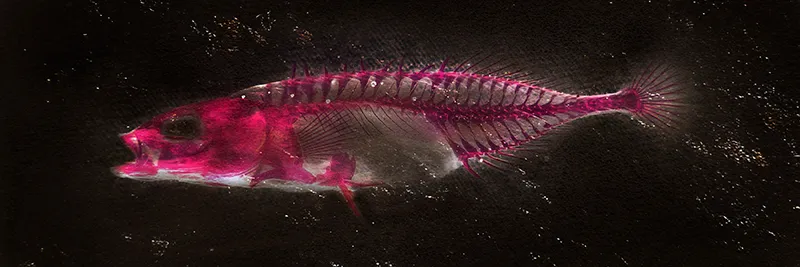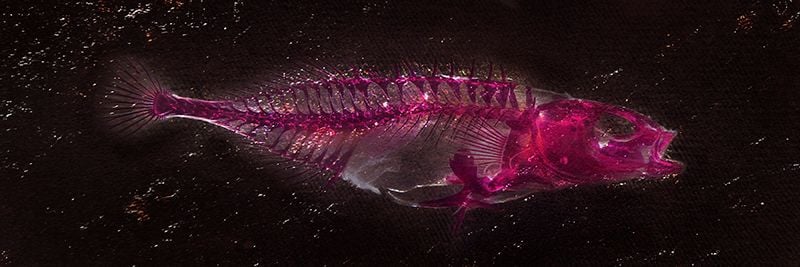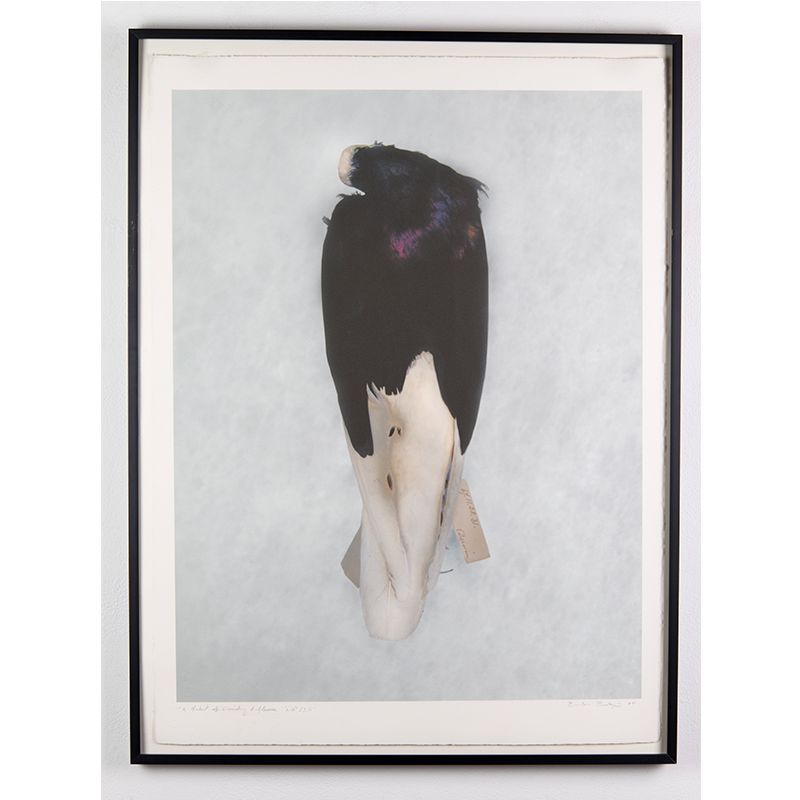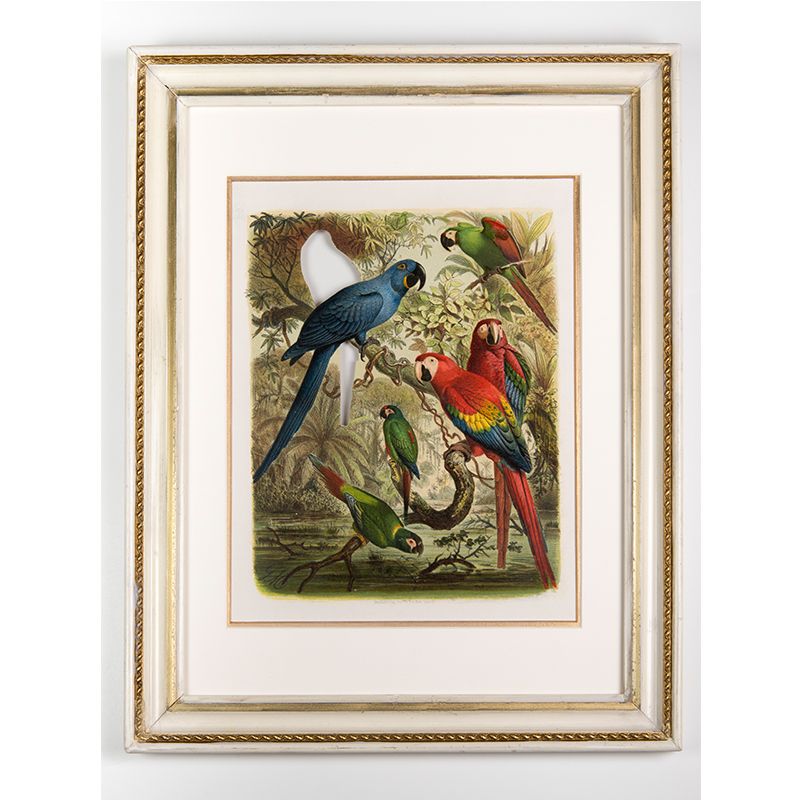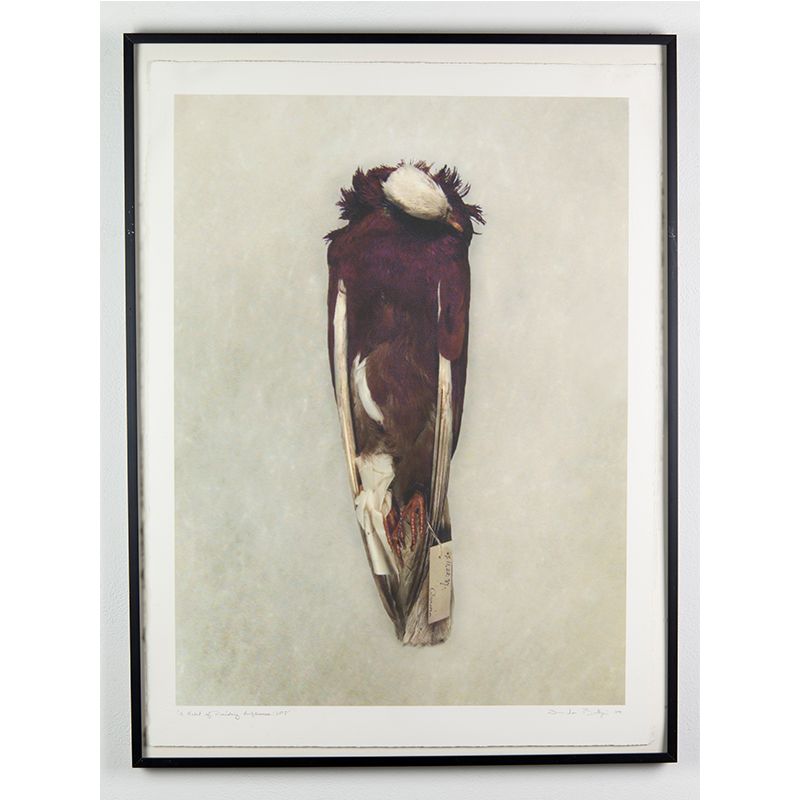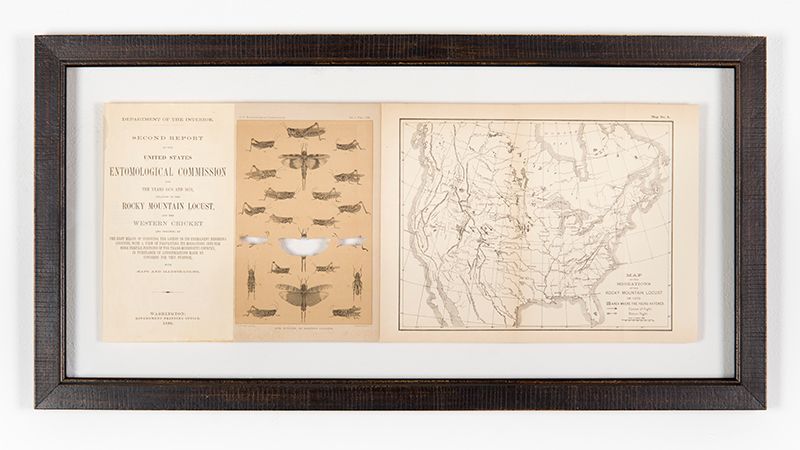With Deformed Frogs and Fish, a Scientist-Artist Explores Ecological Disaster and Hope
A 20-year retrospective of Brandon Ballengée’s artwork explores humans’ connection to cold-blooded creatures
/https://tf-cmsv2-smithsonianmag-media.s3.amazonaws.com/filer/c9/82/c982850e-ea2e-4a08-87cc-dc7ff99e4061/ballengee-frog.jpg)
In the early to mid-1990s, people across the northern and western United States, from Vermont to Michigan to California, started noticing something strange in their local ponds. Frogs clustered at the water's edge sprouted too many limbs. Their normally compact squat was distorted by three or four or more sprawling, spindly back legs. On others, limbs were truncated and missing.
"It scares me," Judy Helgen, a researcher at the Minnesota Pollution Control Agency told The New York Times in 1996 about the then-mysterious malformations. "I'm at different levels of getting a chill down my spine."
Worried that the cause of the deformities might next affect humans, researchers took to the field to investigate. Over the next decade, they discovered that for many malformations, the culprit was a tiny parasitic flatworm, a trematode called Ribeiroia ondatrae.
The trematode tends to infect frog species just when they are developing their limbs. The parasites burrow into the limb buds of tadpoles and create cysts that prevent all the cells in the developing limb from communicating with each other. As a result, multiple legs can sprout where just one should have.
Tragically, the deformities can be severe enough that young frogs may die because they can't move properly.
Yet where some people might see only fuel for nightmares, Brandon Ballengée saw an opportunity to connect people to the environment.
"We are all artists and scientists," he says. "Both are creative endeavors to understand the world around us and within us. Everyday we approach the world through the lens of the scientist when we are trying to learn the way that things work. But then we also learn from an emotive side."
Ballengée is an artist, a biologist and an environmental activist. His research delves into the causes of deformities in fish and amphibians, and his artwork features images inspired by his science.
Now, an exhibition at the University of Wyoming Art Museum presents a survey of the many intricate, creepily-beautiful works that Ballengée has created over the past 20 years. The more than 100 pieces on display include prints, photographs and installations that feature fish, amphibians, birds and insects.
Frog skeletons glow in rich pinkish-red, vibrant blue and tawny orange against white or black backgrounds. Their too-numerous legs and other abnormalities are obvious. Ballengée made these images into art, but the specimens would be familiar to researchers. To study skeletal deformities in amphibians and fish, scientists wash the creatures' dead bodies in a chemical bath that renders flesh transparent. Then they stain the bones different colors.
The same basic process also made possible the magenta fish skeletons that shine from inside large light boxes. Not all of Ballengée's featured animals are transparent. Another series includes images of multi-colored pigeons—in natural hues, not stained—hanging in repose. These are digital collages created from the preserved skins of Charles Darwin's personal collection of pigeons. A few other series include large images of developing frog eggs, fetal chickens and pages from old natural history books with the species that have since gone extinct cut out.
"I explore how we see the environment from the lens of the animal and what do these organisms tell us," Ballengée says. "But I try to do it in a way that is not so much hitting people over the head with a message, but actually having them experience it."
As a PhD student, Ballengée looked into the mystery of missing limbs on amphibians. Now, he is a post-doctoral researcher at Louisiana State University, where he works with the LSU Museum of Natural Science's curator of fishes, Prosanta Chakrabarty. Their current project involves raising awareness of the aftereffects of the BP Deepwater Horizon oil spill in the Gulf of Mexico.
The effort marries a survey of biodiversity in the Gulf with a traveling museum that includes images of fish that died after the spill. Ballengée invites school groups and members of the community to help the survey team, see the traveling exhibit and offer their own reflections on the spill and recovery.
Combining disciplines in this way came naturally to Ballengée. During his childhood in Central Ohio and Eastern Tennessee, he would often go out to collect amphibians, fish and insects. "I would set up these kind of habitat dioramas in aquariums or terrariums to study their behavior," he says. "But I was always drawing them too. I couldn't do one without the other, and I still can't."
Ballengée spoke to Smithsonian.com about his work and the University of Wyoming exhibition.
How does your art influence your research?
Even through getting my graduate degree, I've always been interested in making art about the experience of studying these declining species and the impact of what is like to find these frogs in nature. But I also do this thing where I take people into the field with me.
I call them ecoactions. Basically it's a kind of citizen science or participatory biology. It gets people involved and interested, but I'm learning from them too. What do they know about these wetlands or these species? I'm often a tourist as a researcher. I'm going in for a year or two and don't have the background of growing up in the area.
But then people also have this experience of finding frogs. These are complicated situations, where maybe 70 percent of the frogs you are finding are terminally deformed. This is tragic because the little frogs are just coming out of the water and if they have no hind limbs, then they are just dying. I encourage people to make art or take art materials with them so there is a way they can reflect on it.
How do you try to balance the tragic and the inspiring in your work?
There are aesthetic strategies that I try to employ throughout the work so that in each there is something engaging, not just scary or overwhelmingly sad. There is a lot of choice when it comes to use of color and use of material.
For example, in this series I am working on now, called "Ghosts of the Gulf," there are giclée prints [digital prints created on inkjet printers] that are watercolor ink on handmade Japanese rice paper. As a result, the colors of the fish have this feeling of being very fragile and ephemeral. The images are of these little fish that were found dead either during the oil spill or right after. On the science side, I was collecting the fish and staining them to look for any developmental defects, which we didn't find, but they were just so beautiful I wanted to image them and make art.
Hopefully they are beautiful enough to just attract people to the texture, form and color, and then people on their own can ask questions.
It is a difficult push and pull between trying to express something that is really beautiful and at the same time telling these stories that are kind of tragic. I try to balance it out with different bodies of work that deal with resilience too. Hopefully, when people see or experience the exhibition they don't leave feeling sad—instead they leave feeling interested and engaged.
But I do like to have that whole range of emotion.
What pieces in new exhibition fit this theme of resilience?
There is a piece called "Hope," involving raptor wings from the University of Wyoming Vertebrate Museum. What they allowed me to do is use 13 raptor wings. They are just kind of coming out of the wall and creating this arch.
Since the ban of DDT, raptor populations in general are really coming back. I think that is a really hopeful story that started with Silent Spring and Rachel Carson. Just a few individuals fought to stop the use of this pesticide that was hurting birds. Because of them, it was banned and now we are seeing the result.
Also, in one part of the exhibition there are breeding calls of the Wyoming Toad. Their story is really fantastic. At one point it was thought there were less than 10 alive anywhere in the world, and so some people collected eight of them. From those eight, they have released a quarter of a million since the 1990s back into the wild. It was just a handful of people initially that saved this species from extinction.
What does being an environmental activist mean to you?
I'm really interested in the term activist meaning "to activate." Imagine if you can activate people to look at an environment as all those little individuals—all those little insects, all the little frogs, all the organisms that are out there—and as part of their community. Getting people to look at ecosystems that way, I think, really changes their perspective and their actions and behavior.
I just love the idea of sculpting society through ideas. That way you can activate and inspire one another toward better and more sustainable behaviors.
"Waste Land: A Survey of Works by Brandon Ballengée, 1996-2016," continues through December 17 at the University of Wyoming Art Museum in Laramie, Wyoming. Many more images of Ballengée's work as well as his scientific research can be found on his website.
